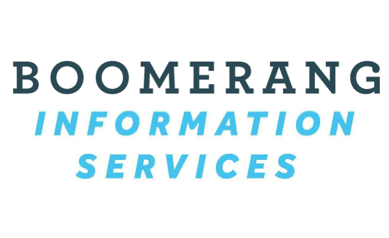At our house we have an ongoing game of coming up with names for a hypothetical band, despite the fact that none of us are currently in one. Because I work in the due diligence industry, I think we should call the band “Perfected Deed”. It’s an awesome name, but my teenage sons aren’t having it.
Aside from being a great (hypothetical) band name, a “perfected deed” is just one of the many pieces of lingo that are part of the U.C.C., or Uniform Commercial Code universe. Because this universe has a language of its own, this post will quickly clarify some of the most common pieces of jargon in our industry in an effort to help all of us increase our U.C.C. fluency.
U.C.C.
Okay, so what is a U.C.C. anyway? As mentioned above, the acronym stands for Uniform Commercial Code – a set of laws enacted to help standardize commerce across states. Individual states enact the laws (with slight variation) and then codify them into the state’s code of statues to ensure smooth interstate commerce. Areas covered by the code include the sale of goods, lease of goods, negotiable instruments, letters of credit, etc.
A “U.C.C.”
While the acronym references the code more generally, in our industry you will often hear people talking about “a U.C.C” (singular). Due diligence companies are most commonly involved with the part of the overall Uniform Commercial Code that governs and enforces the use of collateral. In sum, when we talk about “a U.C.C.” (singular) we are referring to the official document that makes public record of the fact that some asset has been offered as collateral in a loan. Boomerang’s business is to either file these documents, or – most often – to conduct research within the database of U.C.C. filings to discover if something has already been claimed a security interest. Which brings us to, (wait for it…)
Security Interest
The term “security interest” references an asset of the debtor to be used as collateral so that the lender can be protected in the case of default by the debtor. While some security interests involve real property, most filings involve items covered by Article 9 of the Uniform Commercial Code (see Term #1 above) which governs the enforcement of security interests that involve personal property – including moveable and intangible property, and fixtures (we’ll get to that in a minute). In U.C.C. lingo, then, the lender is referred to as “the secured party” and most U.C.C. filings reference things like…
Fixtures
Simply put, a fixture is a physical thing permanently attached to a piece of real property. Fixtures can include buildings, machinery, grain bins, etc…What exactly can constitute a fixture can vary from state to state and is, itself, hard to define. One proposed solution to standardization has been the “half-inch” formula in which “anything which could be moved more than a half inch by one blow with a hammer weighing not more than five pounds and swung by a man weighing not more than 250 pounds would not be a fixture.” Kind of brings to mind a carnival game, no?
Attachment
For a security interest, like a fixture, to be enforced it must first be “attached”. Attachment requires three things – 1) the rights, on the part of the debtor, to use the asset as collateral, 2) an assigned value, and 3) an authenticated security agreement describing the collateral. While these three items would hypothetically allow a lender to collect in case of default, attachment alone does not guarantee that the lender would have primary rights to the collateral. To be first in line for the item in question, the attachment must be “perfected.”
Perfected Deed
And so it is that we have arrived back at my band name. A perfected lien, title, deed…or any other attachment is simply a piece of collateral to which the lender has superior or sole rights – thereby insuring that no one else can lay claim to that collateral in case of bankruptcy or default on the part of the debtor. Most attachments are perfected through the filing of a financing statement (typically a UCC 1), most often with the Secretary of State. This financing statement essentially makes public the lender’s primary interest in the attachment in question. Interestingly, while the form secures the rights of the lender to the attachment, they are filed under the debtors name.
So What…
We hope this brief tutorial has been useful in clarifying the terminology surrounding U.C.C.s The good news is, there’s no quiz! The even better news is that Boomerang is here not just to inform you, but to serve you in whatever your due diligence needs. Whether you are a lender looking to protect your interests, a corporate compliance firm researching for a client’s request, or any other interested party – we are here to insure that all your due diligence needs are met.




